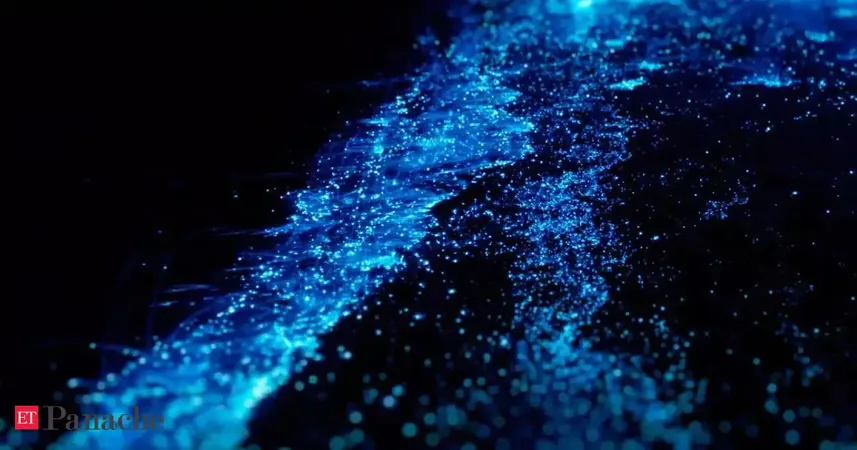
Unraveling the Enigma of 'Milky Seas': A 400-Year-Old Maritime Mystery Finally Explained!
2025-04-13
Author: William
The Mystery of Glowing Waters
For centuries, sailors have recounted tales of mesmerizing glowing seas, known as milky seas. Once dismissed as mere folklore, a groundbreaking new study sheds light on this captivating phenomenon, aiming to decode its mysteries and uncover its significance.
A Phosphorescent Phenomenon
Imagine sailing on a moonlit sea, only to be enveloped in an ethereal glow stretching from horizon to horizon. In 1967, seafarer J. Brunskill aboard the SS Ixion described such an awe-inspiring sight, while Captain P. W. Price of the MV Westmorland spoke of a brilliant green luminosity blurring the lines between water and sky. Such experiences, reported across centuries, are now under serious scientific investigation.
The Quest for Answers
Led by doctoral student Justin Hudson at Colorado State University, researchers have compiled over 400 verified sightings of milky seas, creating an extensive database that could transform our understanding of this fleeting spectacle. Hudson's goal is ambitious: to predict when and where these rare occurrences will manifest. "This phenomenon has existed in plain sight for centuries, yet we still don’t fully understand it," he asserts.
More than Just Bioluminescence
Unlike the familiar sparkle of bioluminescent plankton, milky seas are vast—sometimes covering areas larger than 100,000 square kilometers—and glow continuously, visible even from outer space. This unique brightness is likely caused by concentrations of a glowing bacterium called Vibrio harveyi, which remains largely enigmatic.
Ecological Implications
Renowned marine biologist Dr. Edith Widder views milky seas as a natural experiment. She asks, "What happens when creatures that thrive in darkness are suddenly exposed to such light?" The implications could revolutionize our understanding of marine behavior and ecosystems.
A Call to Study Environmental Impact
Beyond their beauty, milky seas may signal vital changes in marine health or ecological imbalance, especially in light of climate change. As Dr. Steven Miller highlights, these bacterial events could be impacted by shifting global patterns, making their study crucial for tracking ecological changes.
Hope on the Horizon
Despite the challenges faced in the past attempts to study milky seas, this new database offers renewed optimism for researchers. With technology and knowledge advancing, the dream of witnessing this otherworldly phenomenon may soon be realized.
As for now, the ocean continues to shroud its glowing secrets beneath its waves, beckoning curiosity from those brave enough to venture forth.









 Brasil (PT)
Brasil (PT)
 Canada (EN)
Canada (EN)
 Chile (ES)
Chile (ES)
 Česko (CS)
Česko (CS)
 대한민국 (KO)
대한민국 (KO)
 España (ES)
España (ES)
 France (FR)
France (FR)
 Hong Kong (EN)
Hong Kong (EN)
 Italia (IT)
Italia (IT)
 日本 (JA)
日本 (JA)
 Magyarország (HU)
Magyarország (HU)
 Norge (NO)
Norge (NO)
 Polska (PL)
Polska (PL)
 Schweiz (DE)
Schweiz (DE)
 Singapore (EN)
Singapore (EN)
 Sverige (SV)
Sverige (SV)
 Suomi (FI)
Suomi (FI)
 Türkiye (TR)
Türkiye (TR)
 الإمارات العربية المتحدة (AR)
الإمارات العربية المتحدة (AR)